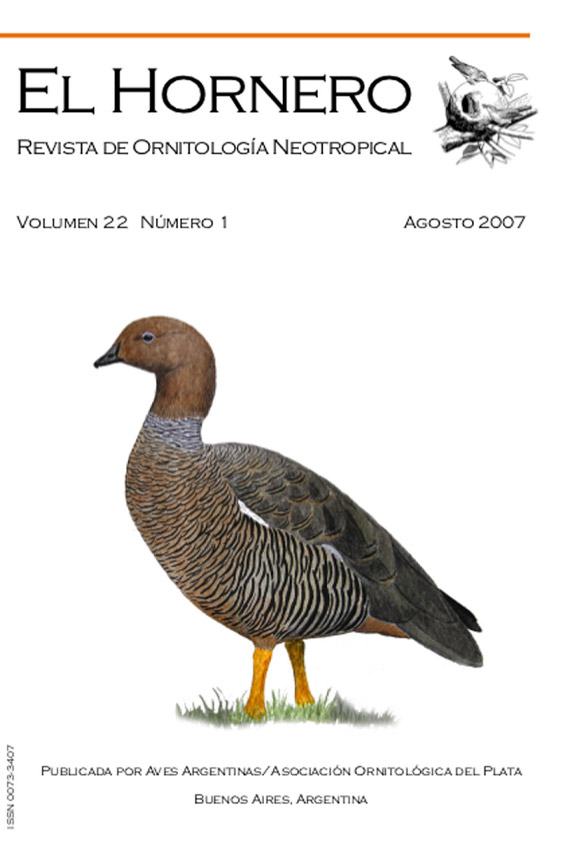Abstract
We report on unknown feeding habits of the Olrog’s Gull (Larus atlanticus) in the area of Ingeniero White port, Bahía Blanca, Buenos Aires Province, Argentina. Between 2002 and 2005, 281 individuals were observed feeding on grains along the shoulder of the road and in a parking lot beside the port. Feeding groups were of 2–51 individuals. This behaviour was observed mostly (78%) during high tides, when access to intertidal prey is limited. The exploitation of human resources by Larus atlanticus supports the hypothesis that this species has some degree of trophic plasticity and could behave as a generalist. We briefly review the literature on its diet, proposing an explanation for the different observations obtained along the coast of Argentina.
References
BERÓN MP (2003) Dieta de juveniles de GaviotaCangrejera (Larus atlanticus) en estuarios de la pro-vincia de Buenos Aires. Hornero 18:113–117
BIRDLIFE INTERNATIONAL (2004) Threatened birds of theworld 2004. BirdLife International, Cambridge
BURGER J Y GOCHFELD M (1996) Family Laridae (gulls).Pp. 572–623 en: DEL HOYO J, ELLIOTT A Y SARGATAL J(eds) Handbook of the birds of the world. Volume 3.Hoatzin to auks. Lynx Edicions, Barcelona
COPELLO S Y FAVERO M (2001) Foraging ecology ofOlrog’s Gull Larus atlanticus in Mar Chiquita Lagoon(Buenos Aires, Argentina): are there age-related dif-ferences? Bird Conservation International 11:175–188
DAGUERRE JB (1933) Dos aves nuevas para la faunaargentina. Hornero 5:213–215

This work is licensed under a Creative Commons Attribution-NonCommercial 4.0 International License.





